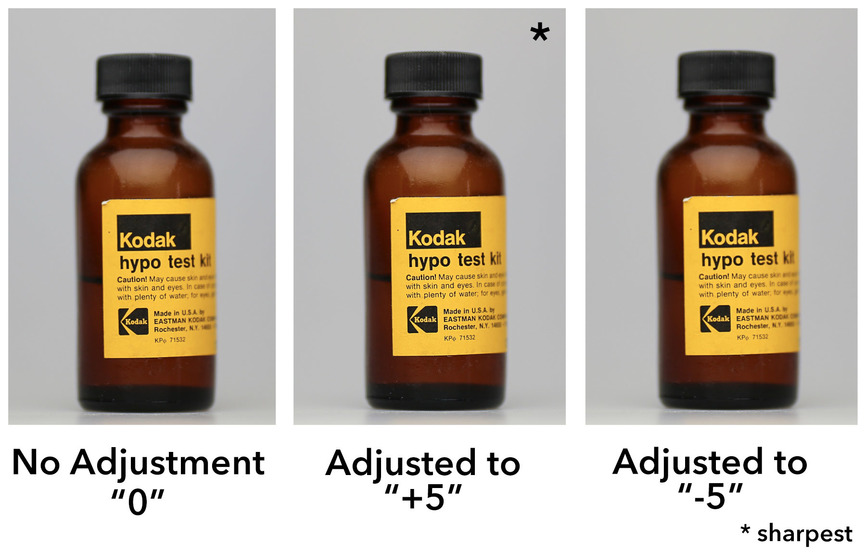Importance of Microfocus Adjustment

It seems as though lately the topic of microfocus adjustments have been coming up more and more. Perhaps this has something to do with wedding season being in full swing and as photographers we always want the sharpest images we can get (especially when there are no do-overs). In this article we wanted to demonstrate the importance of the micro focus adjustment procedure. I am no technical genius, that being said I am going to try to keep this as simple as possible.
Depth of Field
Depth of field is the distance between the nearest and farthest objects in a scene that appear “in focus” in an image.
To keep it simple if you were to autofocus on a subject the depth of field (no matter how large or shallow) will be divided roughly into thirds. 1/3 of the area in front of your subject will be in focus and 2/3 of the area behind your subject will be in focus.

Above is an example of depth of field divided into thirds.
Microfocus Adjustment
The microfocus adjustment procedure is strictly the relationship between the camera and the lens when using the autofocus setting. Sometimes even coming straight from the manufacturer you may experience front or back focusing while autofocusing. This does not apply when you manually focus on your subject. If the image is fuzzy while focusing manually it may simply be a user malfunction or a mechanical defect.
Several weeks back we had a woman come to us for a microfocus adjustment. Among her arsenal of beautiful Canon lenses was her “A” Canon 5D MkIII and a brand new Canon 6D still in its box.

The Canon 6D with a 50mm 1.2
"Beware of the 50 1.2"
#1 The lens (like many others) falls apart when shot wide open. Although this fast lens opens up to f1.2, that doesn't make it the optimum F stop. The contrast turns to mush, color fringing becomes more apparent and the depth of field is almost non-existent. For more info on shooting wide open please see our article Shooting Wide Open.
#2 The Canon 50mm 1.2 users tend to experience more dramatic front or back focussing issues therefore need a more dramatic adjustment.
To demonstrate the importance of a microfocus adjustment we slapped a Canon 50mm 1.2 on the 6D. The results are mind blowing yet, expected.
Initially if you were to put the Canon 50mm f1.2 on a "straight-out-of-the-box" Canon 6D your photos may look like this:

Notice how the center of the chart (Letter B) is completely out of focus? Imagine if that was somebodies eyeball. How disappointing. The story can’t be told.
The focus is more in between the furthermost 2 and 4. This is why the microfocus adjustment is so important.

Normally with a few clicks on the negative side this image is back on track. Unfortunately, I had to exhaust the extent of the cameras microfocus adjustment capabilities by pushing the lens to -20 to get it right on track. That is simply the nature of our beloved Canon 50mm f1.2. Good news is — its right on track and the story can now be told!
Due to the shallow depth of field of this lens, it takes a pixel peepers eye to see that 1/3 of the area in front of the smallest zero is in focus as well as 2/3 behind. As you stop down and your depth of field/contrast increases the thirds will become more apparent.
I should also add that this is why the engineers at Canon and Nikon are so genius.
-Robert Hunter


